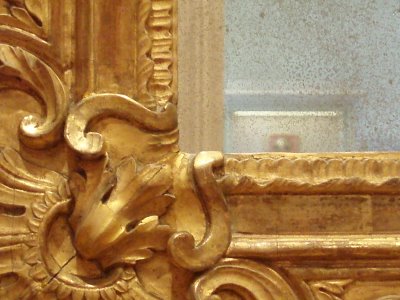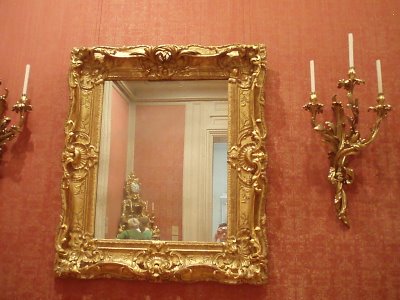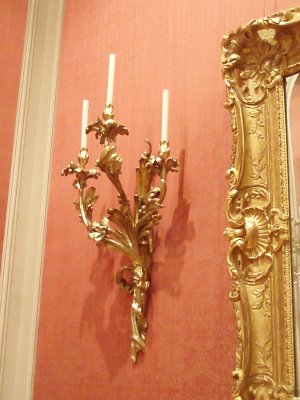Acanthus as an ornamental motif developed not from nature, but from precedent. The motif developed from craftsperson to craftsperson changing over time and stylized far from the actual leaf, Acanthus mollis.
This frame at the Getty is a fine example of the Acanthus motif.– made by Jean Chérin.
Chérin was unusual because he was one of two who were Guild member of carpenters’ and cabinet makers’ in the mid 1700’s–unusual because dues were high and apprentice time was long. But this is how the frame is identified as it should be stamped on the back with his mark from both guilds.
Update 8/21/12. Book recommendations:








